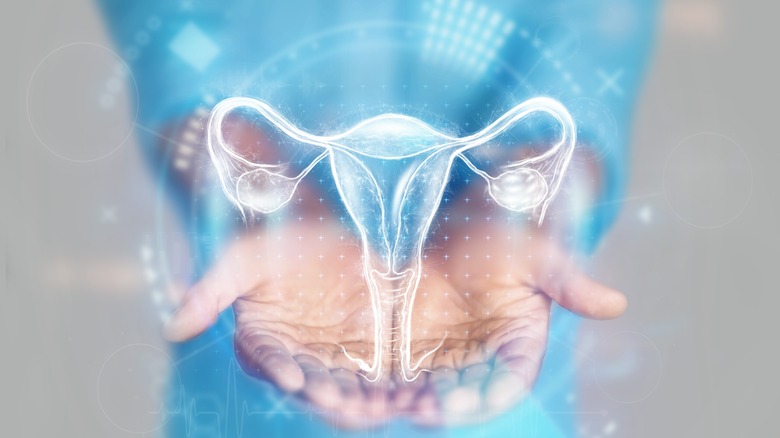Scary Situations Where Abortion Can Be Lifesaving
The general rule for polite conversation is that nobody should bring up the way to raise a child, politics, and religion. Those topics were reserved for small groups where people knew their companions well.
But, as with many older rules of etiquette, conversational rules have changed in the last few years. There's no official record keeper on when and where these rules officially change, but the number of conversations people now have — or flatly refuse to have — at family gatherings is a good indicator that certain topics are becoming much more common.
Today we might look at abortion and think that it touches on so many of those restricted topics. And, naturally, we would think that it has always been as divisive a subject as it is today. But as the Hopkins Bloomberg — the magazine of the Johns Hopkins Bloomberg School of Public Health — explains, abortion was essentially a nonissue until the late 1850s.
That changed when, in 1857, the American Medical Association sought to standardize medical access. Abortion, which was largely carried out by healing women for other women in their communities, came under fire. And the fight has been on ever since.
Everyone has their opinions on the topic with roots in everything from religion to science to philosophy. Regardless of a person's opinion, however, there are certain situations when an abortion may be necessary to save a woman's life. And, in some cases, it may be medically preferable for the fetus.
Severe Preeclampsia
High blood pressure is an incredibly common occurrence among pregnant women. The Centers for Disease Control and Prevention (CDC) states that 1 in every 12 to 17 pregnant women aged 20 to 44 will develop high blood pressure. It is a condition known as hypertension and it is typically treated through a selection of pregnancy-safe medications as well as lifestyle adjustments.
In some cases, however, hypertension can lead to complications for both the mother and the fetus. In the case of the mother, one of those complications is preeclampsia which is serious hypertension after 20 weeks of pregnancy. The Mayo Clinic states that in average cases the condition presents with severe headaches, shortness of breath, pain under the ribs, vision changes, and several other symptoms that are only discernible with lab tests.
Medication and lifestyle changes are used to treat preeclampsia, even in its severe form. But the Society for Maternal-Fetal Medicine states that treatment for all forms of preeclampsia is for doctors to induce an early delivery. But in some cases, the fetus is not yet viable outside the womb before the woman's blood pressure becomes dangerously high. In these cases, abortion may be necessary to save the woman's life.
Pulmonary hypertension
Post-conception blood pressure isn't a woman's only risk factor for complications, unfortunately. Pulmonary hypertension is a condition in which high blood pressure affects the pulmonary arteries so that the blood they carry to the lungs from the heart does not contain the necessary amount of oxygen (via Cleveland Clinic).
The National Heart, Lung, and Blood Institute explains that the condition can develop on its own but that, in America at least, it is most commonly associated with left-sided heart disease. On another page of their website, they explain the condition is likely to get worse over time. They also say that failure to monitor the condition and follow a care plan can cause the condition to worsen and lead to further complications, particularly during pregnancy.
It's easy to understand, then, why the American College of Cardiology released a statement in 2015 urging women with pulmonary hypertension to avoid pregnancy. They go so far as to suggest permanent means of contraception, as the risk of the mother dying is too great otherwise. Those who do become pregnant are urged to opt for a cesarean section rather than a vaginal birth.
But opting for a cesarean may not be enough. The Pulmonary Hypertension Association spelled it out in no uncertain terms when they released a statement after June 24, 2022. As the PHA says, pregnancy is dangerous for women with pulmonary hypertension and safe abortion access may be the way to protect the lives of women in such a situation.
Chronic kidney problems
Blood pressure can also contribute to kidney disease according to the National Institute of Diabetes and Digestive and Kidney Diseases. Diabetes is another contributing factor and the Institute makes it clear that a medical provider should run tests to determine which cause is most likely, as this will affect treatment.
In general, early chronic kidney disease may not have any symptoms. More advanced forms of the disease may cause weight loss, fatigue, nausea, and shortness of breath among other symptoms according to the Institute.
But there are additional complications that only arise for women with kidney disease when they become pregnant. The National Kidney Foundation states that some women, specifically those with stage 1 or 2 kidney disease and without high blood pressure or protein in their urine, may be able to safely deliver a baby.
Women with more advanced forms of kidney disease, however, are cautioned to avoid pregnancy. The Foundation warns that the risk to both the mother and her baby can be severe. It goes on to suggest that a woman with kidney disease should consult her doctor before attempting pregnancy.
Not all women intend to conceive when they become pregnant, however. And, in those cases, it may be necessary to terminate a pregnancy in order to save a woman's life. Without this option, she will be vulnerable to the extreme risks mentioned by the Foundation.
Cancer treatments
Not all high-risk pregnancies relate back to high blood pressure, of course. And, unfortunately, not all risks can be as readily dealt with as most cases of high blood pressure. For some unlucky women, pregnancy complications may arise thanks to a medical condition that may develop due to the random genetic lottery, such as some cancers like breast cancer (via National Cancer Institute).
The American Cancer Society states that cancer diagnoses are rare for women in the time between when they conceive and when they give birth. It's not unheard of, however. Generally when cancer is diagnosed during pregnancy, according to the ACA, it is because a pregnant woman feels an alarming lump or experiences a symptom that she worries is connected to her pregnancy. These are sometimes dismissed as pregnancy related. But when they are examined, those symptoms can also turn up unexpected cancerous cells.
Each woman's choices at this point are different. The ACA explains that many imagining options can endanger the fetus, depending on where in the woman's body the cancer is located. Similarly, some cancer treatments will have little to no effect on fetal development while others can cause harm.
The ACA goes on to say that, in most cases, there is no reason to terminate a pregnancy in order to begin cancer treatment. But in cases with aggressive or advanced cancers detected early on, it may be the only way for the pregnant woman to seek the treatment she needs.
Ectopic Pregnancies
Cancer often occurs as the unfortunate result of genetics and something too tragic to be properly called luck. And the same is true of another relatively well-known complication.
A little under 2% of pregnancies each year are ectopic pregnancies, according to the University of California, Davis. The University goes on to say that ectopic pregnancy is the highest cause of maternal mortality in the first trimester. This is because ectopic pregnancies occur when a fertilized egg implants someplace other than the uterus. In rare cases, these locations can include cesarean section scars or the abdomen; but, in most cases, these pregnancies implant in the fallopian tubes.
There is no room for a fetus to develop in the fallopian tube. This means that the pregnancy is not viable. But if it is not terminated, the growing fetus can rupture the woman's fallopian tube, causing massive internal bleeding. This, says the Mayo Clinic, can be life-threatening.
Regardless of someone's personal beliefs, these situations bring a mixed torrent of emotions. And while some women in these situations can carry a pregnancy to term, they do so at great risk. Many others are not so lucky. In 2020, the maternal mortality rate was 23.8 deaths per 100,000 live births, marking an upward trend in maternal mortality over the last several years (via the CDC). In instances like those listed above, abortion can help save women's lives.






